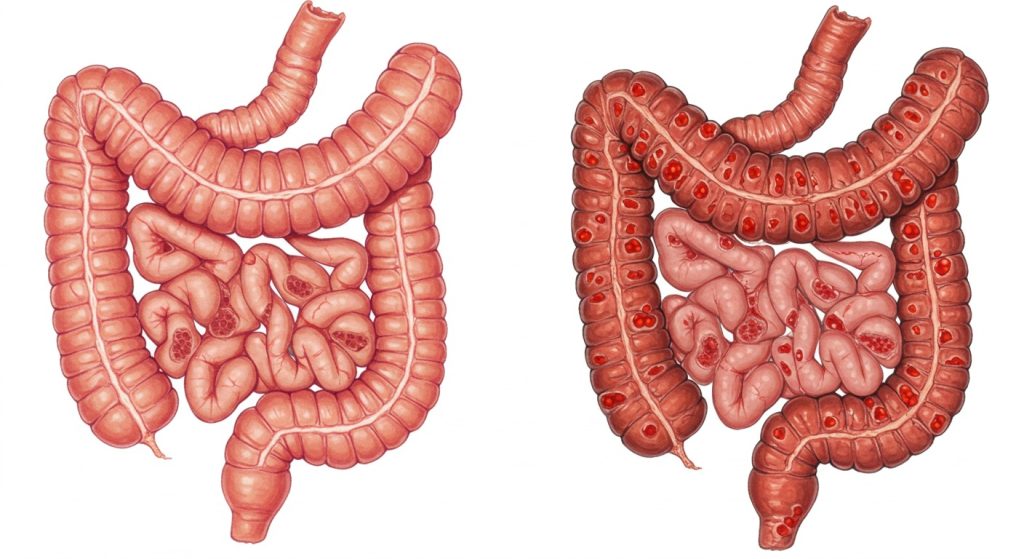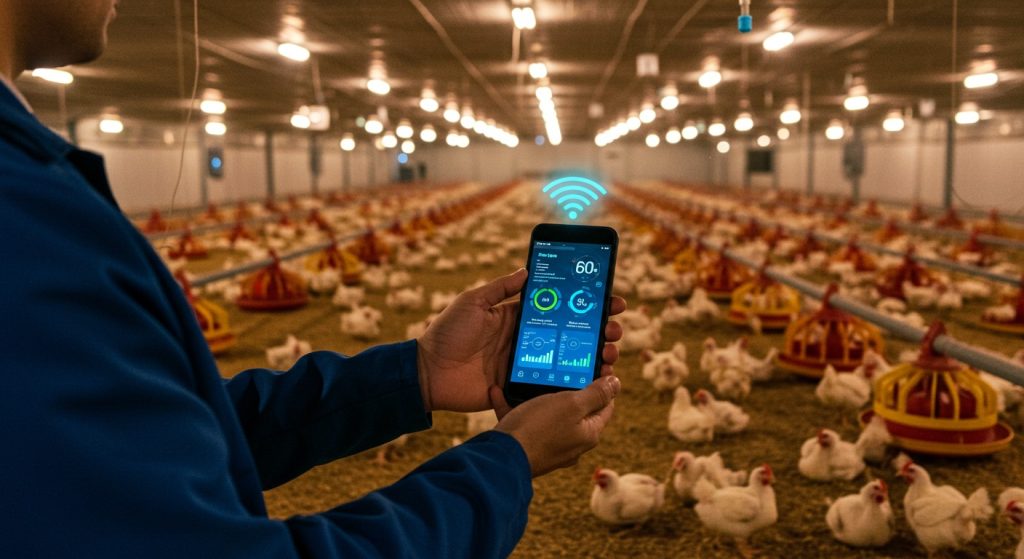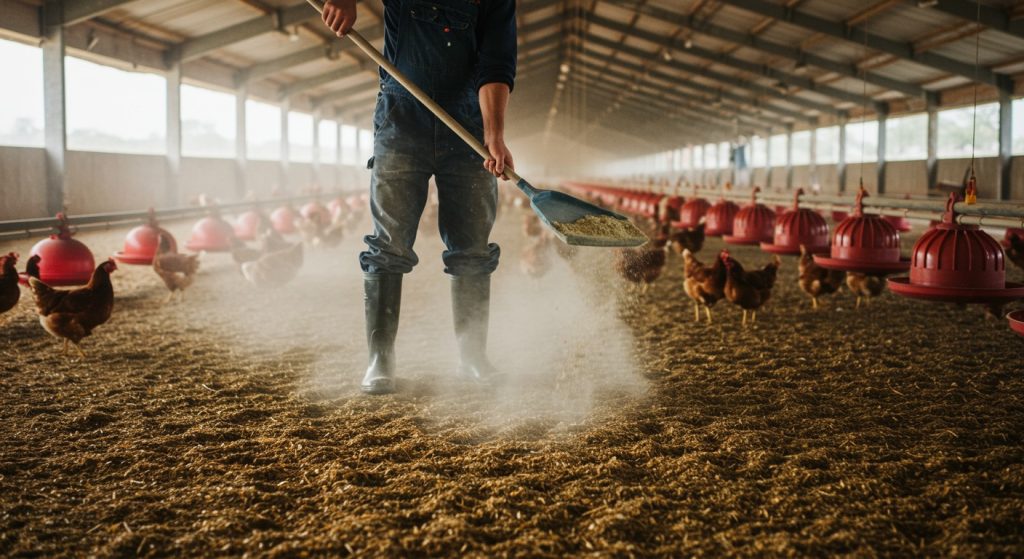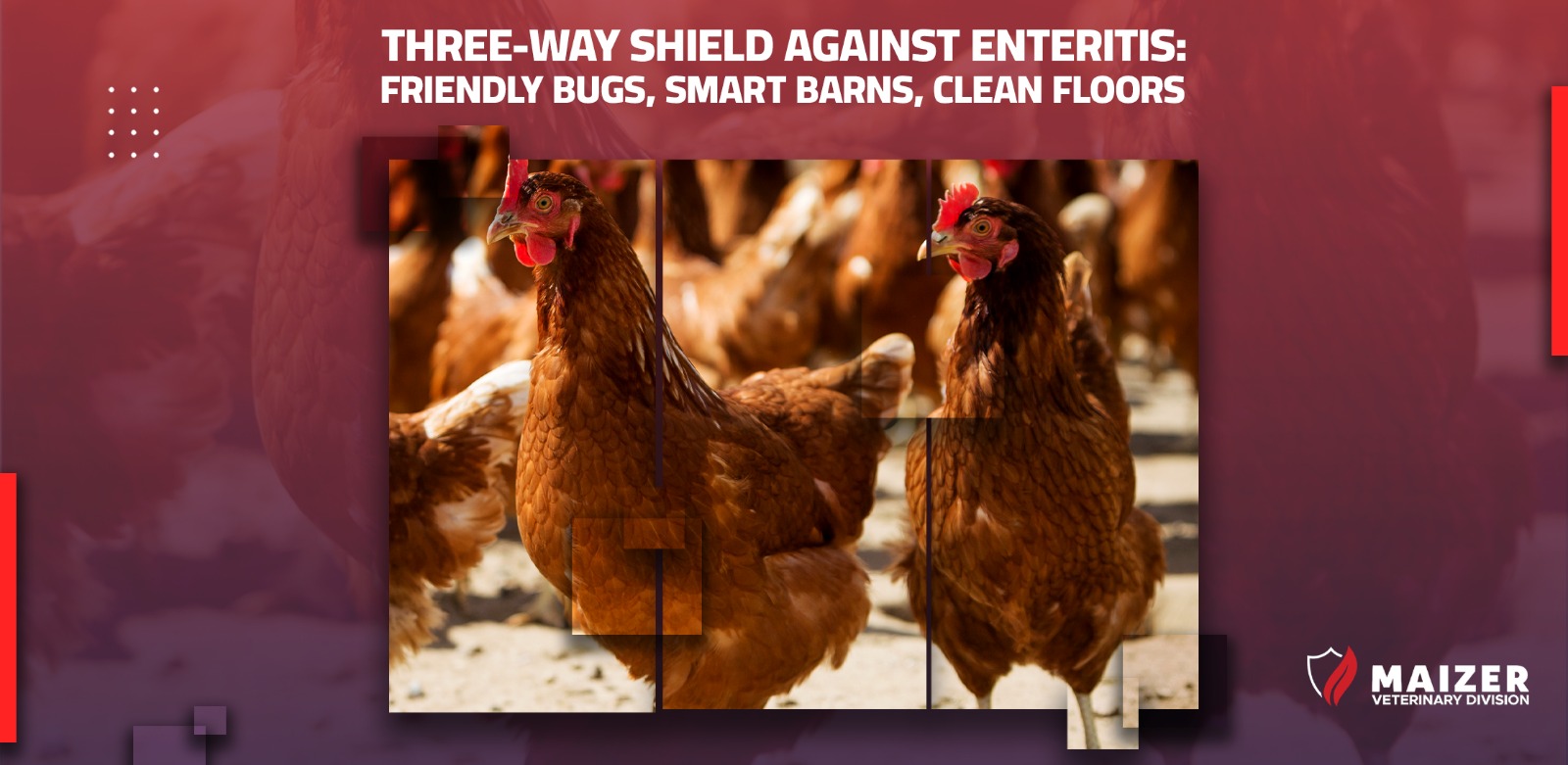Three-Way Shield Against Enteritis: Friendly Bugs, Smart Barns, Clean Floors
Abstract
Challenge models are needed to understand the pathogenesis of necrotic enteritis (NE) and provide the basis of evaluating nonantibiotic feed-additive interventions. In the category of nonantibiotic feed additives, the application of probiotics to improve intestinal health and growth performance of broiler chickens in the face of an NE challenge has been well described. However, it is crucial to evaluate the consistency of specific probiotics for mitigating the disease challenge and improving performance. Necrotic enteritis (NE) is an intestinal bacterial disease in poultry caused by Clostridium perfringens infection and annually costs up to six billion US dollars in production globally (Wade and Keyburn, 2015). C. perfringens is a spore-forming, strictly anaerobic Gram-positive bacterium which could produce up to 17 kinds of toxins (Parish, 1961). According to the secreted toxins, C. perfringens can be divided into five types: types A, B, C, D, and E. NE was caused by C. perfringens type A and/or C infection (Engström et al., 2003; Prescott et al., 2016). NE is typically divided into clinical NE and subclinical NE. Clinical NE usually exhibits mass death with a mortality rate up to 50% and causes intestinal ulcer erosion, bloody feces, and so on (Lee et al., 2011; Alnassan et al., 2014). However, SNE leads to mild intestinal damage in the flock, resulting in inappetence, malabsorption, poor digestion, and further impaired growth performance with a mortality generally less than 5%. Therefore, chronic intestinal mucosal damage in SNE-infected broilers causes more serious economic losses than clinical NE infections due to the difficulty in detection. Previous studies have demonstrated that NE infection is usually accompanied by intestinal lesions in broilers, disorders in intestinal microflora (Latorre et al., 2018), intestinal inflammation (Collier et al., 2008; Park et al., 2008), and damages of intestinal tight junction and mucus barrier in broilers (Golder et al., 2011; Forder et al., 2012; Guo et al., 2014). Therefore, modulation on intestinal health may be a great strategy to control NE infection in broilers.

Introduction
- Why a New Gut-Health Playbook Is Needed
- What Exactly Is the Three-Way Shield Approach?
- How Do Multi-strain Probiotics Form the First Line of Defense?Is It True That Digital Barn Sensors Can Alert Us Before Birds Collide?
- Why Does Litter Management Complete the Triangle?
- What ROI Can Producers Expect?
Introduction – Why a New Gut-Health Playbook Is Needed
In the post-antibiotic era, alternatives like plant extracts, organic acids, polysaccharides, and vaccines have emerged as effective tools to promote animal growth and maintain flock health. Among these, probiotics stand out as a reliable method to support intestinal health and prevent subclinical necrotic enteritis (SNE) in poultry. Bacillus licheniformis, a Gram-positive bacterium, is known for its resilience under heat and stress. It produces various biologically active compounds such as digestive enzymes, lysozyme, bacteriocins, and antimicrobial peptides. These substances improve feed digestibility, stimulate immune development, strengthen the intestinal barrier, inhibit pathogenic bacteria, and promote beneficial microbes in the gut.

For example, B. licheniformis has been shown to enhance the expression of tight junction proteins and mucin, helping to maintain the mechanical barrier of the intestine and reduce permeability. It also supports mucosal immunity by increasing the activity of key immune receptors and proteins involved in gut defense. This includes the upregulation of cytokines and secretory antibodies like sIgA. In addition, diets containing B. licheniformis have been found to improve the composition and structure of intestinal microbiota in poultry, especially under disease challenge. Several studies have demonstrated its effectiveness in preventing and controlling necrotic enteritis in broilers.However, not all probiotic strains are created equal. Even within the same species, different strains can have different properties and outcomes. For this reason, it is essential to evaluate specific strains like B. licheniformis for their ability to protect intestinal health, modulate immune responses, and maintain microbial balance under field conditions. Khatun et al., 2022).
What Exactly Is the Three-Way Shield Approach?
By addressing gut microbiology, barn environmental monitoring, and litter conditions all at once, the Three-Way Shield method dramatically reduces the risk of enteritis and enhances flock performance. The tactic combines:
- Probiotics with multiple strains
- Sensors for digital barns
- Advanced techniques for managing litter

- How Do Multi-strain Probiotics Form the First Line of Defense?
Beneficial bacteria like Lactobacillus species, Enterococcus faecalis, Bacillus subtilis, and Bacillus licheniformis are introduced by probiotics like PROBACLIV from Maizer (a manufacturing company in France). These strains increase enzyme activity, decrease gut pH, and competitively exclude dangerous pathogens. Advantages consist of:
- Better absorption of nutrients
- Increased rates of feed conversion
- intestinal villi that are stronger
- Decreased intestinal lesions
- There is no need for a withdrawal period. (Menconi et al., 2020),(Kan et al., 2021)
To learn more about gut integrity under different stressors, read our comprehensive article on Managing Diarrhea in Large Animals.
- Is It True That Digital Barn Sensors Can Alert Us Before Birds Collide?
Indeed, cutting-edge IoT sensors provide accurate, real-time monitoring of vital environmental parameters like carbon dioxide (CO₂), moisture, and ammonia (NH₃). Proactive interventions are made possible by threshold-based alerts.
- Moisture alerts at 28% trigger immediate action (mdpi.com)
- Ammonia alerts at 25 ppm ensure swift responses (ssrn.com)
- Cost-effective at less than $1 per 1,000 birds per cycle (ssrn.com)
Smartphone integration simplifies farm management, ensuring optimal conditions to prevent enteritis outbreaks.

- Why Does Litter Management Complete the Triangle?
Effective litter management disrupts the pathogen lifecycle. Moist litter facilitates growth of harmful microbes like Clostridium and coccidia. Best practices include:
- Lime top-dressing to elevate pH and deter pathogens (Penn State Extension, 2023)
- Windrow turning for aeration and drying (Auburn University, 2011)
- Acid treatments to reduce ammonia (up to 30 ppm) (de Toledo et al., 2020)
Maintaining dry, clean litter substantially reduces enteritis risk, complementing probiotics and sensor-driven management.

Week-by-Week Programme: How Do the Three Layers Fit Together?
Age (Weeks) | PROBACLIV Dose | Sensor Set-Points | Litter Action | Optional Anticoccidial |
1-2 | Initial Dose | Moisture <25% | Lime top-dress | Ionophore |
3-4 | Maintenance Dose | NH₃ <25 ppm | Windrow turning | Chemical coccidiostat |
5 | Maintenance Dose | CO₂ <3000 ppm | Acid treatment | None |
What ROI Can Producers Expect?
Using the Three-Way Shield yields substantial benefits:
- Improvement in feed conversion: about 8%
- Lesions in the intestines decreased by about 35%
- Increased liveability: about 2%
- Payback in two flock cycles is typical.
- No worries about antibiotic residues (van der Heijden, 2016),(Menconi et al., 2020)
Farm Managers’ Quick-Start Checklist
- As soon as the chick is placed, calibrate the water medicators.
- Connect environmental sensors to applications for farm monitoring.
- Audit the moisture content of the litter every week (less than 25%).
- Compare flock performance KPIs on a regular basis.

FAQ – Top Questions Integrators Ask
Can probiotics replace ionophores completely?
No, but significantly reduces dependency, promoting a balanced approach. See more in What Are Anticoccidial Drugs?.
Cost per bird compared with AGPs
Comparable or lower, factoring in improved productivity and health outcomes (Khatun et al., 2022).
Will probiotics survive chlorinated water?
Yes—PROBACLIV formulations are chlorine-resistant.
Safe for layers and breeders?
Absolutely, with no egg withdrawal required.
Conclusion – One Strategy, Three Layers, Total Control
There is no longer just one way to treat enteritis. Combining the established advantages of probiotics, the accuracy of intelligent environmental monitoring, and the fundamental significance of litter hygiene, the Three-Way Shield provides a comprehensive, scientifically supported method of safeguarding the health of poultry. By strengthening the others, each layer builds a robust system that raises operational profitability, flock health, and feed efficiency. PROBACLIV is an essential component of this comprehensive approach because it has a high return on investment and no withdrawal period. Producers who transition from reactive to proactive management not only manage enterprises but also maximize their farms’ prospects.



